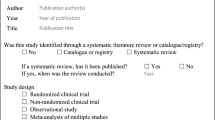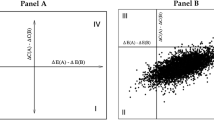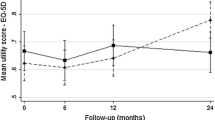Abstract
This paper reviews the role of patient preferences within the framework of cost-effectiveness analysis (CEA). CEA typically adopts a system-wide perspective by focusing upon efficiency across groups in the allocation of scarce healthcare resources, whereas treatment decisions are made over individuals. However, patient preferences have been shown to have a direct impact on the outcome of an intervention via psychological factors or indirectly via patient adherence/compliance rates. Patient values may also be in conflict with the results of CEA through the valuation of benefits. CEA relies heavily on the QALY model to reflect individual preferences, although the healthy year equivalent offers an alternative measure that may be better at taking individual preferences into account. However, both measures typically use mean general population or mean patient values and therefore create conflict with individual-level preferences.
For CEA to reflect practice, it must take into account the impact of individual patient preferences even where general population preferences are used to value the benefits of interventions. Patient preferences have implications for cost effectiveness through costs and outcomes, and it is important that cost-effectiveness models incorporate these through its structure (e.g. allowing for differing compliance rates) and parameter values, including clinical effectiveness. It will also be necessary to try to predict patient preferences in order to estimate any impact on cost effectiveness through analyses of revealed and stated preference data. It is recognized that policy makers are concerned with making interventions available to patients and not forcing them to consume healthcare. One way of moving towards this would be to adopt a two-part decision process: the identification of the most cost-effective therapy using mean general population values (i.e. the current rule), then also making available those treatments that are cheaper than the most cost-effective therapy.
Similar content being viewed by others
References
Drummond MF, Sculpher MJ, Torrance GW, et al. Methods for the economic evaluation of health care programmes. 3rd ed. Oxford: Oxford University Press, 2005
Coulter A. Partnerships with patients: the pros and cons of shared clinical decision-making. J Health Serv Res Policy 1997; 2 (2): 112–21
Charles C, Gafni A, Whelan T. Shared decision making in the medical encounter: what does it mean? (or it takes two to tango). Soc Sci Med 1997; 44: 681–92
National Institute for Health and Clinical Excellence: Guide to the methods of technology appraisal. London: NICE, 2008
Birch S, Gafni A. On being NICE in the UK: guidelines for technology appraisal for the NHS in England and Wales. Health Econ 2002; 11: 185–91
Brooks R, on behalf of the EuroQol Group. EuroQol: the current state of play. Health Policy 1996; 37: 53–72
Dolan P. Modelling valuations for EuroQol health states. Med Care 1997; 35 (11): 1095–108
Briggs A, Claxton K, Sculpher M. Decision modelling for health economics evaluation. Oxford: Oxford University Press, 2006
Kanis JA, Brazier JE, Stevenson M, et al. Treatment of established osteoporosis: a systematic review and cost utility analysis. Health Technol Assess 2002; 6: 29: 1–146
Brazier JE, Akehurst R, Brennan A, et al. Should patients have a greater role in valuing health states? Appl Health Econ Health Policy 2005; 4 (4): 201–8
Mukuria C, Brazier J, Tsuchiya A. Exploring the relationship between health and happiness: a comparison across studies of different conditions using the SF-6D and EQ-5D [online]. Available from URL: http://www.sheffield.ac.uk/content/1/c6/04/39/44/Clara.pdf [Accessed 2009 May 18]
Roberts J, Dolan P. To what extent do people prefer health states with higher values? A note on evidence from the EQ-5D valuation set. Health Econ 2004; 13 (7): 733–7
Kharroubi SA, Brazier JE, O’Hagan A. Modelling covariates for the SF-6D standard gamble health state preference data using a nonparametric Bayesian method. Soc Sci Med 2007; 64: 1242–52
Mehrez A, Gafni A. Quality-adjusted life years, utility theory, and healthy-years equivalents. Med Decis Making 1989; 9 (2): 142–9
Bleichrodt H, Johannesson M. An experimental test of a theoretical foundation for rating scale valuations. Med Decis Making 1997; 17: 208–16
Ratcliffe J, Buxton M. Patient’s preferences regarding the process and outcomes of life saving technology: an application of conjoint analysis to liver transplantation. Int J Technol Assess Health Care 1999; 15: 340–51
Towers I, Spencer A, Brazier J. Healthy year equivalents versus quality-adjusted life years: the debate continues. Expert Rev Pharmacoecon Outcomes Res 2005; 5 (3): 245–54
Sculpher M, Gafni A. Recognizing diversity in public preferences: the use of preference sub-groups in cost-effectiveness analysis. Health Econ 2001; 10 (4): 317–24
Dixon S. Including patient choice in cost effectiveness decision rules. HEDS Discussion Paper 07/07. Sheffield: University of Sheffield, 2007
Bradley C. Patient preferences and randomised trials. Lancet 1996; 347: 1118–9
Author information
Authors and Affiliations
Corresponding author
Rights and permissions
About this article
Cite this article
Brazier, J.E., Dixon, S. & Ratcliffe, J. The Role of Patient Preferences in Cost-Effectiveness Analysis. Pharmacoeconomics 27, 705–712 (2009). https://doi.org/10.2165/11314840-000000000-00000
Published:
Issue Date:
DOI: https://doi.org/10.2165/11314840-000000000-00000




